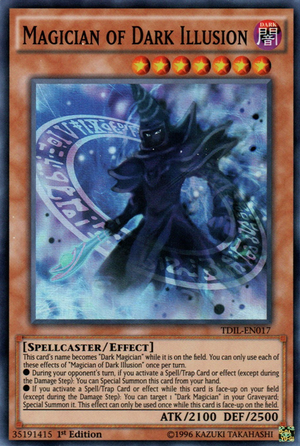- Back to Home »
- ARTICLES »
- A Beginner’s Guide to Shuffling
Posted by : Unknown
Jun 11, 2010
No matter how skilled you are, or how good your Deck is, you can ruin your chances to win by not randomizing your Deck enough. We’ve all been there: you draw your opening hand and find 6 Monster Cards, 6 Spells and Traps, or 3 copies of the same 2 cards. The good news is that with proper shuffling, you can stop this from happening most of the time.
What Is A Randomized Deck?
The reason I say “most of the time” is that a truly randomized Deck could give you any 6 cards in your opening hand: including 3 copies of the same 2 cards, 6 monsters, and so on. You can’t expect to avoid that all the time. What we’re trying to do instead, is make sure that your draws are never influenced by patterns or clumps of cards in your Deck. There are a lot of ways that cards can clump together:
-When you make changes to your Deck between tournaments, you probably sort your Deck into monsters, Spells, and Traps.
-You might sort your Deck between Matches to make sure you have all of your cards.
-If a Judge Deck checks your Deck at a tournament, you may get it back organized and sorted.
Even just normal Dueling might make a pattern amongst your cards. Spell Cards are sent to your Graveyard when they resolve, so your Spells might clump together. If you finish a Duel with 4 or 5 monsters on your field, those monsters might clump, too. Activating Pot of Avariceand sending 5 monsters from your Graveyard to your Deck could leave you with a pile of Spells and Traps in your Graveyard at the end of the Duel.
The good news is that no matter how your cards get clumped, good shuffling habits can solve the problem. A simple routine can ensure that your deck is randomized.
The Routine
Before every game, make sure to start your shuffling with a “pile shuffle,” also called a “power shuffle.”
-Take your Main Deck (face-down!) and go card by card from the top, laying out 6 or 8 piles of cards face-down.
-Put the first card in Pile 1, the second card in Pile 2, and so on until you have 1 card in each pile.
-Then do it again, adding a second card to each pile. Continue until all your cards have been divided into piles.
-Combine those piles into one stack: your Deck. Congratulations, you have just completed a pile shuffle.
Pile shuffling isn’t really random: there’s nothing random about taking one stack of cards and turning it into 8 piles. But pile shuffling is good because it breaks up those patterns and clumps that can sometimes form in your Deck. Because pile shuffling isn’t really random, you always need to follow it with a second type of shuffle.
Your second shuffle can be any type you like. If you’re new to card games, you can find demonstrations of different types of shuffles online. Popular shuffles include the Overhand Shuffle, Kenchi Shuffle, or the Weave Shuffle – they’re all easy to do, and the more shuffles you use, the more randomized your Deck will be. Just 2 to 3 minutes of shuffling before and between Duels will do the trick.
Shuffling Your Opponent’s Deck
You’re responsible for making sure that your Deck is properly randomized, but you’re also responsible for making sure that your opponent’s Deck is too. Once you finish shuffling your Deck, you’ll present it to your opponent for further randomization. Your opponent will do the same, and you’ll get to shuffle or cut his Deck in return. There are a few things to remember here:
-Be careful when handling someone else’s cards – you never want to damage another Duelist’s Deck.
-Make sure not to expose the card faces to your view, or your opponent’s.
-The opponent’s shuffle or cut should be the last randomization to your Deck. You don’t get to cut or shuffle it anymore after.
Randomizing each other’s Decks ensures fair play, and compensates if 1 Duelist forgets to shuffle properly. Remember: whenever your opponent shuffles his Deck, even during the middle of a Duel (for instance, after resolving an effect like Sangan’s), you must shuffle your opponent’s Deck as well.
Got all that?! Here are some quick reminders about what we discussed:
-It’s your responsibility to ensure that both Duelists’ Decks are randomized, both yours and your opponent’s.
-Always pile shuffle, but follow up with at least one more type of shuffle after.
-Always shuffle with your cards face-down, so neither Duelist can see the card faces.
-Your opponent always gets the last cut or shuffle on your Deck
-You always get the last cut or shuffle on your opponent’s Deck
-Always be careful when handling someone else’s cards
Stick to a simple shuffling routine and your Deck will always be randomized. You spend a lot of time perfecting your Deck and your Dueling skills: make sure your Deck is always properly shuffled so you have the fair chance you deserve.
Powered by Blogger.



















